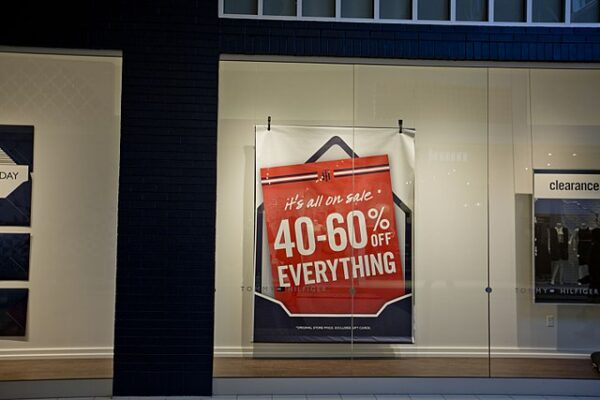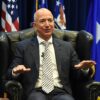The “check engine light” might soon be coming on for the U.S. economy. Consumer spending, a key driver of the economy, continued to dip last month as more and more Americans struggle with the increased price of everyday goods.
“The latest data offer the first tangible signs that the economy’s main engine is slowing,” Oren Klachkin, lead U.S. economist at Oxford Economics told The Associated Press. Consumer spending accounts for about 70 percent of economic activity in the United States.
Retail purchases have fallen in three of the past four months. Spending on services, including rent, haircuts and the bulk of bills, was flat in December, after adjusting for inflation, the worst monthly reading in nearly a year. Sales of existing homes in the U.S. fell last year to their lowest level since 2014 as mortgage rates rose. The auto industry posted its worst sales year in more than a decade, explained The Wall Street Journal.
It’s a stark turnaround from the second half of 2020, when Americans lifted the economy out of a pandemic downturn, helping the U.S. avoid what many economists worried would be a prolonged slump. Consumers snapped up exercise bikes, televisions and laptop computers for schoolchildren during lockdowns. When restrictions were lifted, they rushed back to their favorite restaurants and travel destinations.
And they kept spending, helped by government stimulus, flush savings accounts and cheap credit, even as inflation picked up. Faced with four-decade-high inflation last year, Americans outspent it. Through most of 2022, consumer spending growth exceeded price increases by about 2 percentage points.
Now the forces that helped keep spending high are unwinding, while inflation remains elevated. The share of monthly income Americans set aside for savings was 3.4% in December, down from 7.5% a year earlier and from a record high in April 2020. Credit-card interest rates have been rising, and Federal Reserve officials have signaled that they plan an additional quarter-percentage point increase to the central bank’s benchmark rate this week. That would bring the rate to between 4.5% and 4.75%, from near zero at the start of last year.
CNBC reported, “Personal consumption expenditures excluding food and energy increased 4.4% from a year ago, down from the 4.7% reading in November and in line with the Dow Jones estimate. That was the slowest annual rate of increase since October 2021.
On a monthly basis, so-called core PCE increased 0.3%, also meeting estimates.
At the same time, consumer spending was even less than already modest estimates, indicating that the economy slowed at the end of 2022 and contributing to expectations for a 2023 recession.
The numbers come with Fed officials closely watching to measure the impact their rate increases have had on the economy. In line with other recent economic data, they show inflation persisting but at a slower pace than the level that had driven price increases in mid-2022 to their fastest pace in more than 40 years.”
Some economists saw this as a good thing, arguing that the Federal Reserve would slow its roll on increasing rates. “The medicine is taking,” said Sarah Watt House, senior economist at Wells Fargo said to The New York Times. “The economy is on the right path.”
“Incomes continued to rise,” The Times continued, “reflecting the strong job market. But instead of spending their extra income, Americans chose to save more, a sign that people may be becoming more cautious amid news of layoffs and talk of a possible recession. Households, in the aggregate, still have hundreds of billions of dollars in savings built up during the pandemic, but that cushion has been shrinking.
“Overall, it’s a sign that consumers are becoming more cautious,” Ms. House said. “Consumers are beginning to retrench.”
The data is consistent with anecdotes suggesting that consumers, after months of spending freely, are becoming more sensitive to rising prices.”
Although the pencil pushers may say this is all excellent news. Inflation has been much more demanding on ordinary people. “According to a recent study from U.S. News & World Report’s 360 Reviews, increased costs for food, bills and rent caused many people to make big changes to their living situation. The study surveyed 2,000 U.S. adults who either moved back in with family or had to get a roommate in 2022, and found some of the reasons they made this decision.
Inflation is currently at a 25-year high, according to U.S. News & World Report. From June 2021 to June 2022, the Consumer Price Index for All Urban Consumers increased by 9.1%, the largest 12-month increase since 1981. This sharp increase happened alongside rising student loan debt and high rent prices.
With all these factors at play, U.S. News & World Report states that many Americans spent 2022 struggling to pay for day-to-day expenses like gas and groceries, housing costs and their utility bills.
In the study, U.S. News & World Report found that some attempts to get through rising inflation included selling personal belongings, pulling money from savings or starting a side hustle. But one of the most popular changes was to move in with a roommate or even move back in with family.”
[Read More: Major Distiller Sued For False Advertising]



